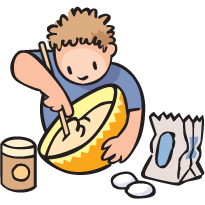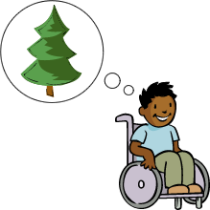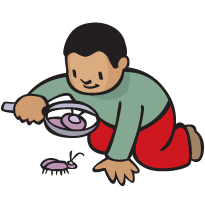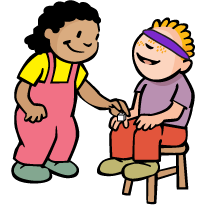Boston Children's Museum
308 Congress Street, Boston, MA 02210
617-426-6500
© Boston Children’s Museum 2024
Website Design by Jackrabbit
Cooking activities, even simple ones like this, are filled with great learning opportunities. Along with measurement and math skills, kids can develop problem solving and literacy skills as well. By experimenting with the ways that certain ingredients act and react with each other, children will gain an understanding of basic cooking chemistry, and will even learn about design as they create and make changes to their cupcake “prototypes”.
VIEW ACTIVITY
Classic games like 20 Questions and Word Bluff give children a chance to practice asking good questions, using descriptive vocabulary, and focusing on the structure of certain words. This game also encourages children to think about characteristics of people, places and things.
VIEW ACTIVITY
Word games are a great way to help children flex their literacy skills and have fun at the same time. This activity focuses on vocabulary and concept development as well as spelling.
VIEW ACTIVITY
Wherever you live, a surprising array of living things occupies the same space. In the city, in the country, in the suburbs…many species of bird, mammal, reptile, amphibian, insect and other organisms can be found if you take the time to look. Giving kids the chance to do an inventory of these creatures not only familiarizes them with living things and classification, but instills in them a sense of place and an understanding of and appreciation for their home environment.
VIEW ACTIVITY
Children’s bodies are undergoing constant change. By getting to know their own bodies better, these changes can be less mysterious. Children who are in tune with their own bodies can use all of their senses as tools as they explore and try to understand the world around them. This activity helps children learn more about their sense of touch.
VIEW ACTIVITY
Children’s bodies are undergoing constant change. By getting to know their own bodies better, these changes can be less mysterious. Children who are in tune with their own bodies can use all of their senses as tools as they explore and try to understand the world around them. This activity helps children learn more about their sense of touch.
VIEW ACTIVITY
Learning how to read and share directions is a critical skill for children to learn—it develops communication skills, descriptive vocabulary, and teaches children to emphasize those points that will help a listener follow ideas and concepts.
VIEW ACTIVITY
There are many activities in this curriculum that involve cooking—and that means tasting too. Getting kids in tune with their taste buds can help them to use their tongues not just as a way of enjoying what they make, but also to use their sense of taste as another tool for exploring the world around them.
VIEW ACTIVITY
By observing buildings and construction sites, students can see the shapes, forms and materials used to create the structures we live, work and play in. Using paper, straws and pipe cleaners, your students will sharpen their engineering skills as they work together to create a series of structures. Working collaboratively, students will communicate with each other as they investigate the variables that affect their structure, test its sturdiness and improve upon their design.
VIEW ACTIVITY
By observing buildings and construction sites, students can see the shapes, forms and materials used to create the structures we live, work and play in. Using dowels and rubber bands, your students will sharpen their engineering skills as they work together to create a series of structures. Working collaboratively, students will communicate with each other as they investigate the variables that affect their structure, test its sturdiness and improve upon their design.
VIEW ACTIVITY